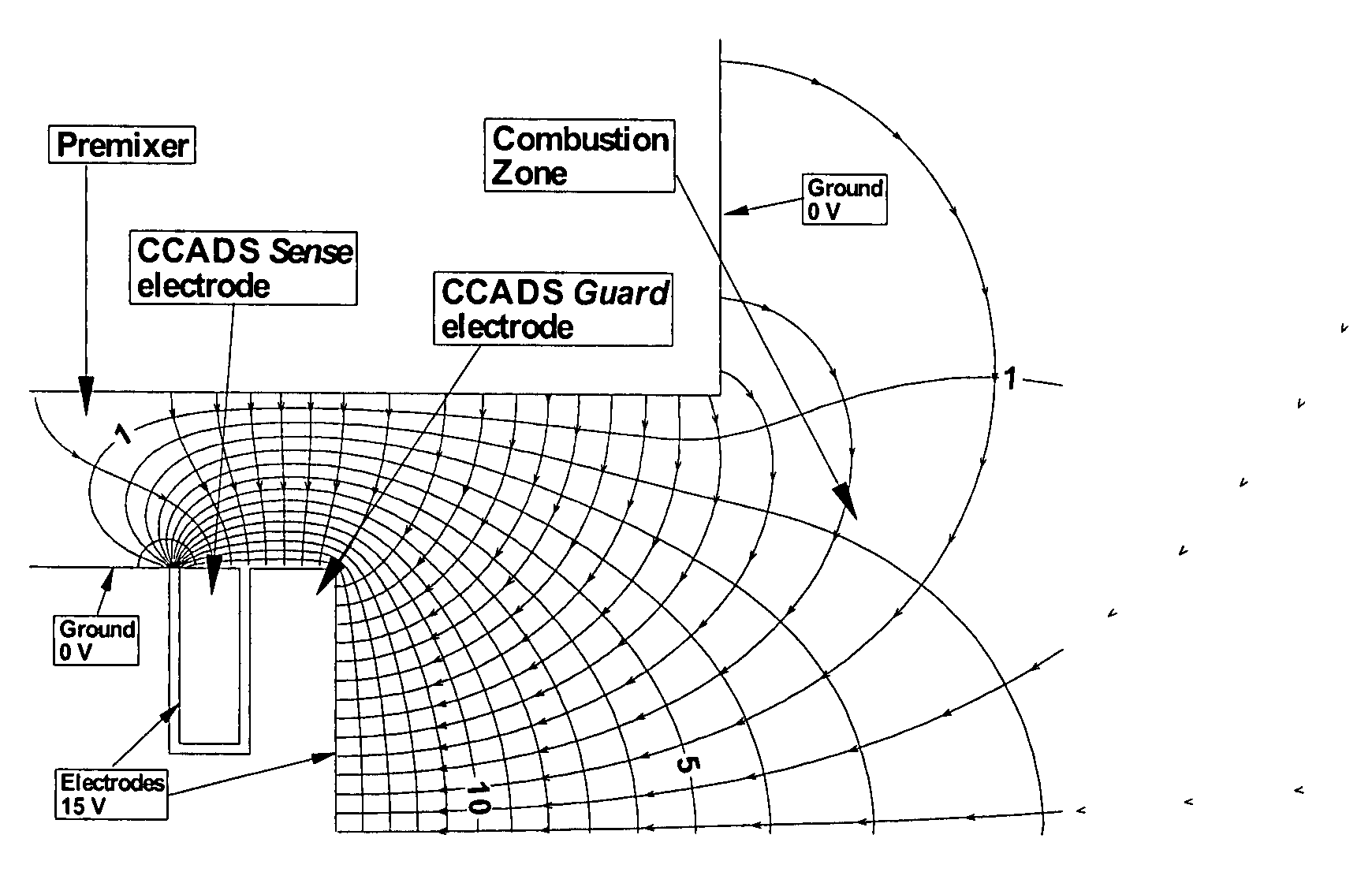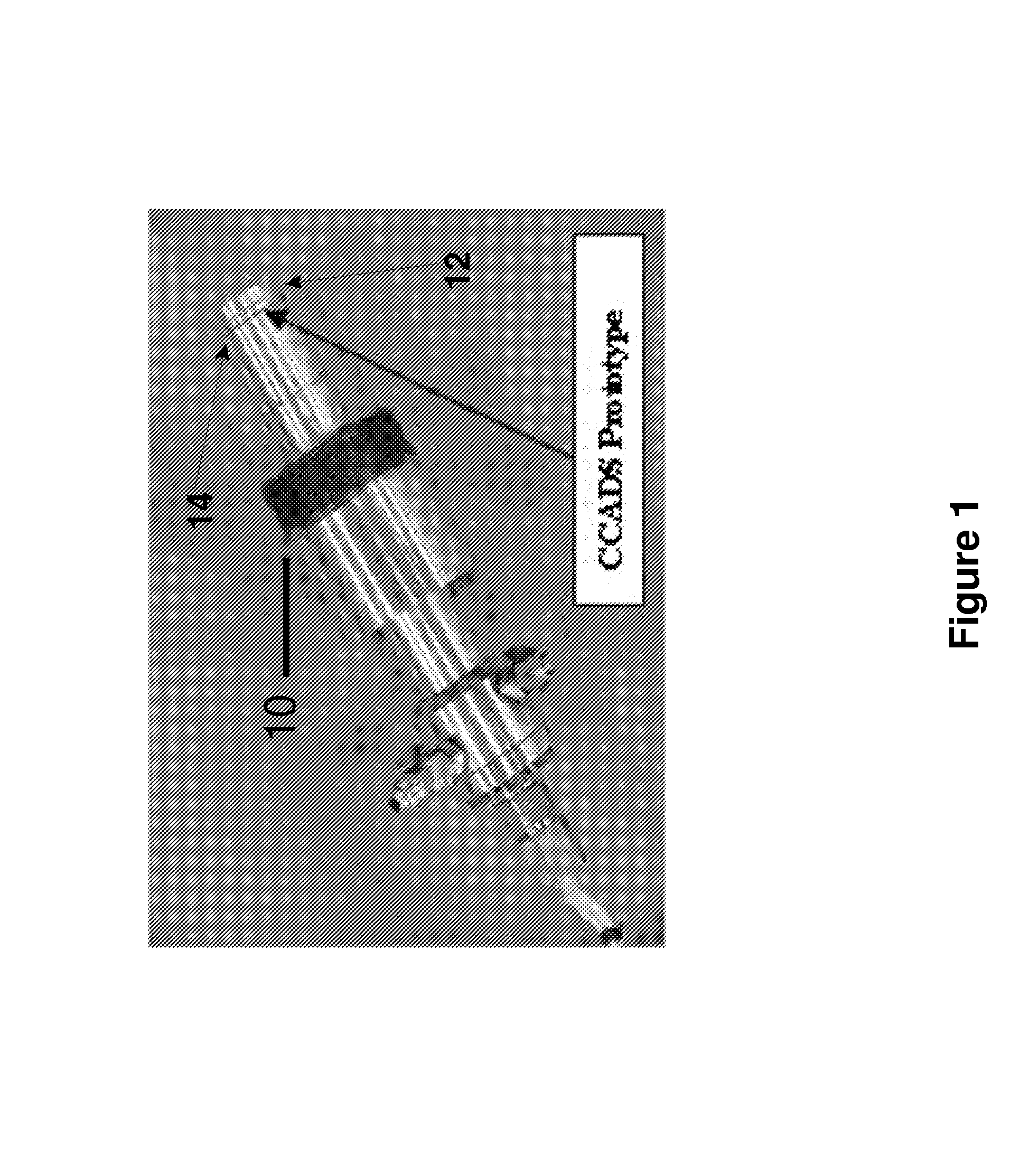Time varying voltage combustion control and diagnostics sensor
a technology of diagnostic sensor and time-varying voltage, which is applied in process control, lighting and heating apparatus, instruments, etc., can solve problems such as unplanned shutdown, reduced component life, and flame instability of advanced combustors, and achieve the effect of reducing flame instability and pollutant emissions
- Summary
- Abstract
- Description
- Claims
- Application Information
AI Technical Summary
Benefits of technology
Problems solved by technology
Method used
Image
Examples
Embodiment Construction
[0026]The operating equivalence ratio (φ) for a combustor using air as the oxidant is defined as
[0027]Φ=(Fuel / Air)(Fuel / Air)stoichiometric(1)
[0028]Flame current measurements have been successfully correlated with the hydrocarbon concentrations in a number of applications. Most notable is the flame ionization detector (FID) used in gas chromatographs, where the relationship of current to hydrocarbon concentration is generally determined by
i=r[CnHm]Q (2)
where r is the charge per mole of hydrocarbon, [CnHm] is the molar concentration of the hydrocarbons, and Q is the volumetric flow rate. The linearity of the FID measurements depends on the consistency of charge collection. This is accomplished by providing consistent inlet bulk flow velocity, a constant electric field across the flame, and using a hydrogen flame to ignite the inlet sample and maintain a stable flame.
[0029]Successful demonstrations of a flame ionization sensor for measuring the local fuel / air ratio in an internal comb...
PUM
 Login to View More
Login to View More Abstract
Description
Claims
Application Information
 Login to View More
Login to View More - R&D
- Intellectual Property
- Life Sciences
- Materials
- Tech Scout
- Unparalleled Data Quality
- Higher Quality Content
- 60% Fewer Hallucinations
Browse by: Latest US Patents, China's latest patents, Technical Efficacy Thesaurus, Application Domain, Technology Topic, Popular Technical Reports.
© 2025 PatSnap. All rights reserved.Legal|Privacy policy|Modern Slavery Act Transparency Statement|Sitemap|About US| Contact US: help@patsnap.com



